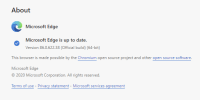Google do some things well, and some other things not so well – those get abandoned reasonably quickly for the most part. One of the areas they’ve excelled at in recent times, is leveraging their Android platform to provide a decent Smart TV experience. So much so, that most TVs these days come with Google TV built into it, and a nice big Google Play button on the TV remote.
In a move that will probably frustrate most TV manufacturers, Google has added this same Google TV experience into their latest Chromecast devices. For $99AU, you can buy a Chromecast with Google TV device and plug it into a HDMI port of your TV, and plug the other end into the wall via USB charger to make any TV, smart.
To reiterate – this can now be a standalone device for streaming media, that doesn’t need your phone or anything else to kick it off.
Personally I’ve been plugging old laptops into TVs and using wireless keyboards to provide a similar experience. In some ways, it’s much nicer to have a full version of Windows available along with a keyboard to be able to alternate between media watching device and computer monitor, but using a keyboard is still a clunky experience for sitting on a couch and just wanting to watch some Netflix.
Coming in three colours (which have fancy names, but they’re white, pale blue and pale pink), I started with a pale blue. The device is still quite small and thin and has the hard wired HDMI cable at one end, and the USB-C port at the other – cable and power point plug were included.

If I buy more, I’ll get one of each colour, because the remote that comes with it is also coloured meaning you know which remote goes with which TV.

It’s a smaller remote that takes 2xAAA batteries (which also came with the device), but I wouldn’t say it’s too small or too light. The top part is a 4 way directional pad with selection button in the middle, with back, Google Assitant, home, mute, YouTube, Netflix, Power and Input toggle buttons available.

The side of the remote also has a volume up/down, and as part of the initial setup you choose your TV and press buttons to make sure it’s working as desinged. My TV brand wasn’t listed (FFalcon), but since it’s an updated name for TCL, I chose that and it worked.
One weird message I had when setting up was this: “This Chromecast was manufactured for a different country, and may not be compatible with your Wi-Fi network.” I bought this directly from Google, and others also had the same message. I’m guessing it was built for the USA which has different Wi-Fi requirements, but it hopefully won’t be an issue here (even though Google couldn’t get Wi-Fi right on their Nest Mini device).

Back on the remote, once I’d finished setting up and started to play around I found the throw distance of the remote for IR functions (such as volume) to the TV was quite poor. Within about 1.5m it worked perfectly, and beyond that it just didn’t work. Maybe it’s just my TV, but it was frustrating. For volume, you do have the choice of having the buttons control the TV volume or the Chromecast device volume, so if you were solely using the TV with that it would make sense to increase the TV’s volume and change to that – but if you have other devices you switch to, they’ll of course come out a lot louder. I ended up using the TV remote for volume instead.
The display looks as you’d expect, a list of apps, with TV show suggestions and access to the Google TV app store. You can add/install a bunch of other apps, including SteamLink which will let you stream games from your PC. Combine that with a bluetooth paired controller to the Chromecast device, and you’ve got an easy gaming setup straight out of your big TV.

I don’t need all the other fluff that Google provide, and surprisingly they’ve added an option where you can turn it off and just be in ‘app mode’. You still see a TV show suggestion (including Disney shows, despite uninstalling the app and restarting the unit), but it’s much cleaner:

I tried out Plex and it worked perfectly!
It’s cheap for what it provides, and it runs really fast. It supports 4K, HDR (which was the first time I saw my TV tell me it was running in HDR 10 mode) and Dolby Vision. It’s noticeably faster to use than the Google TV built into my 2017 Sony OLED TV, which also doesn’t seem to have HDR support for YouTube.
Should you buy this device?
If you want to have streaming apps on a TV that doesn’t have them, YES. If you have inbuilt apps but they’re slow and clunky to use, YES. For the price, it’s an easy investment into having a better viewing experience on any TV. If we start travelling around the world again, this would also be a great device to take with you to turn any hotel room TV with a HDMI port you can get to, into your personal streaming device. However, if your TV already has all the working apps you want for streaming content, this won’t give you anything new.


























